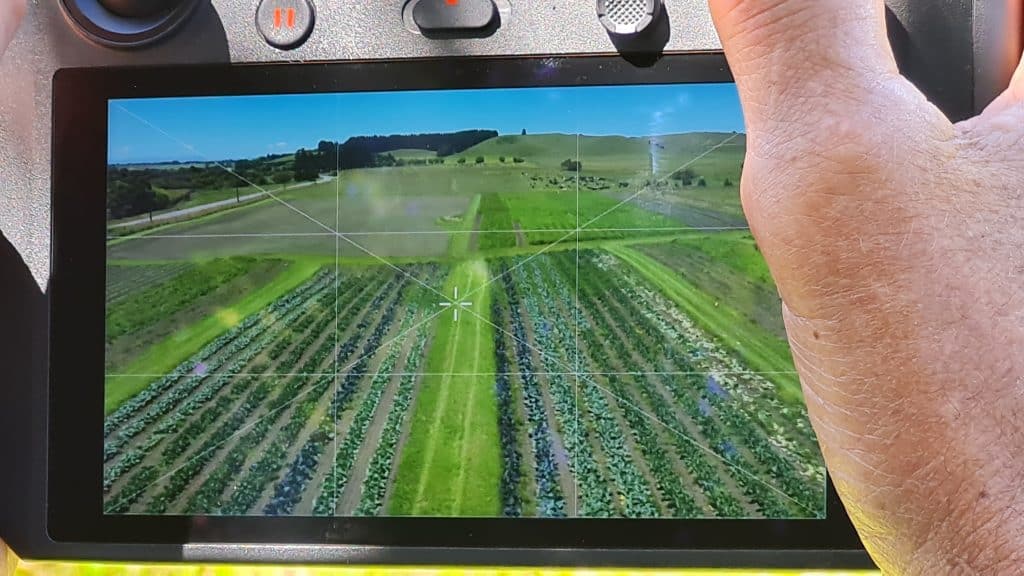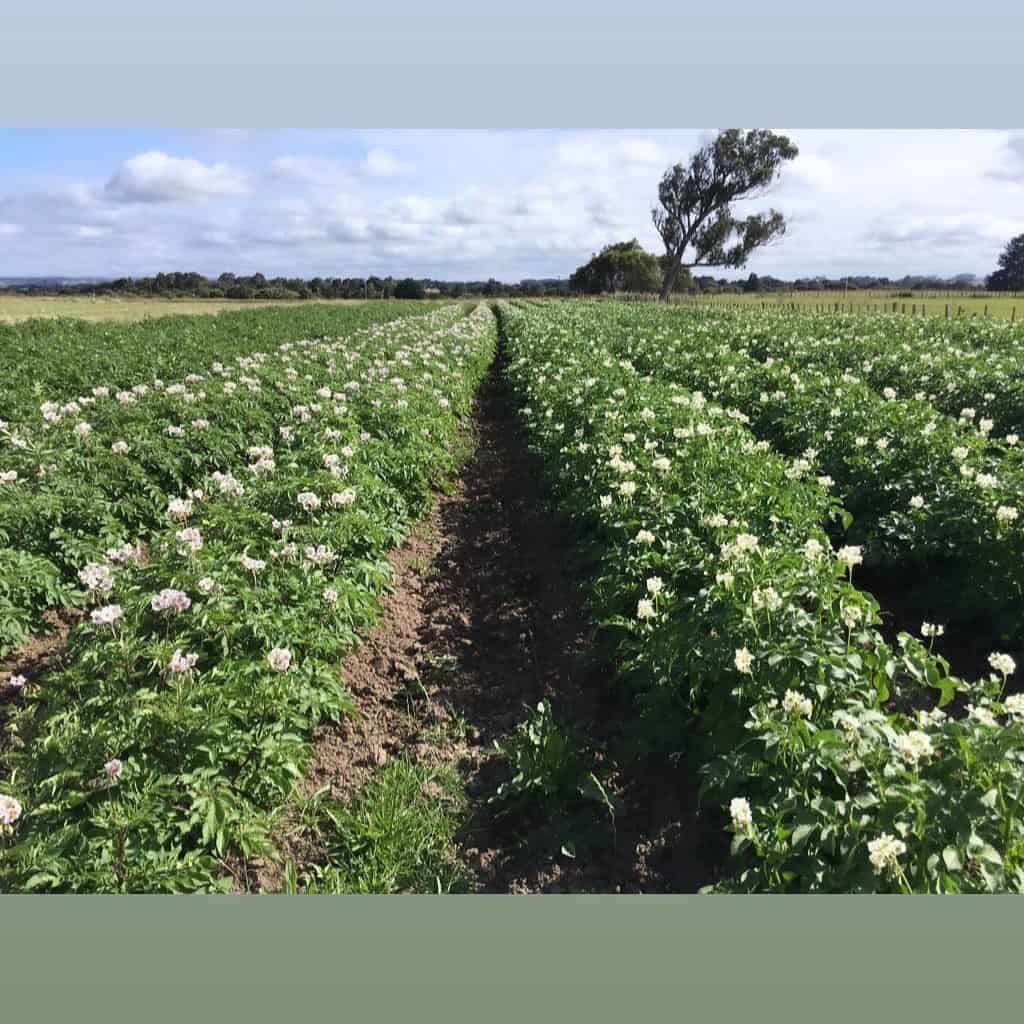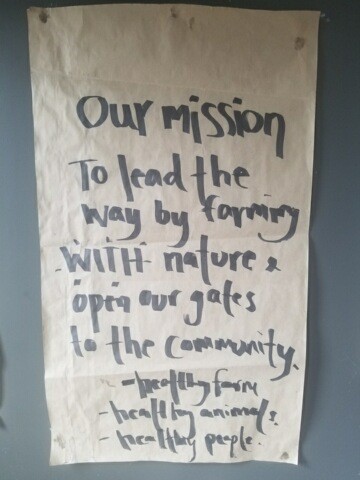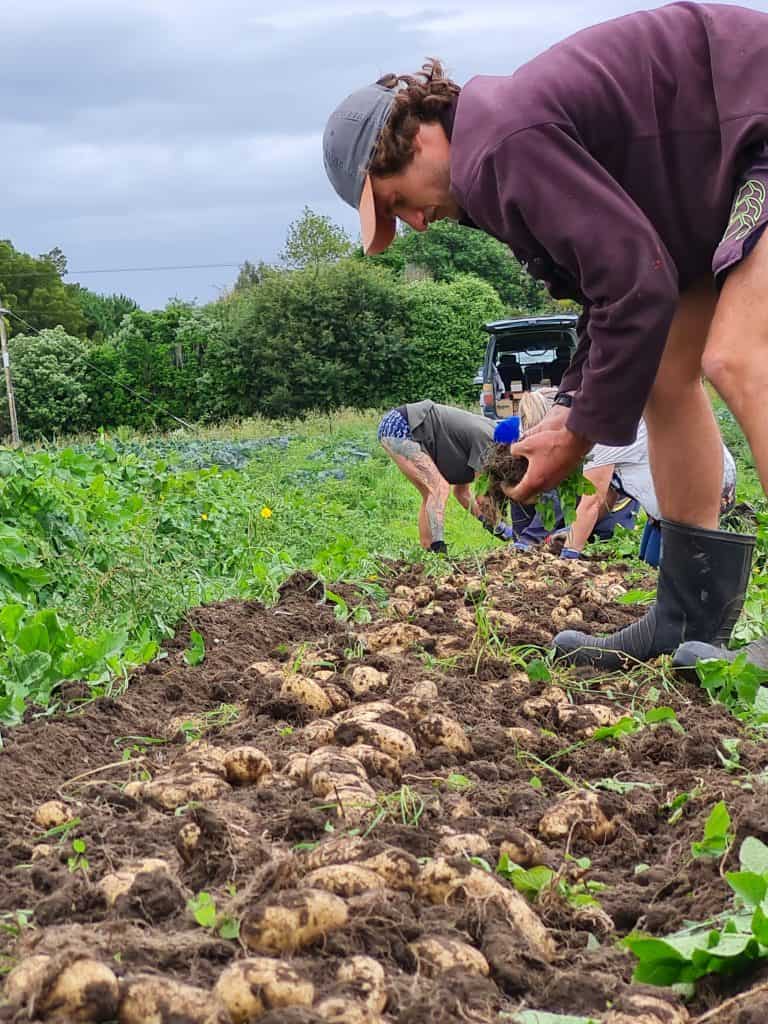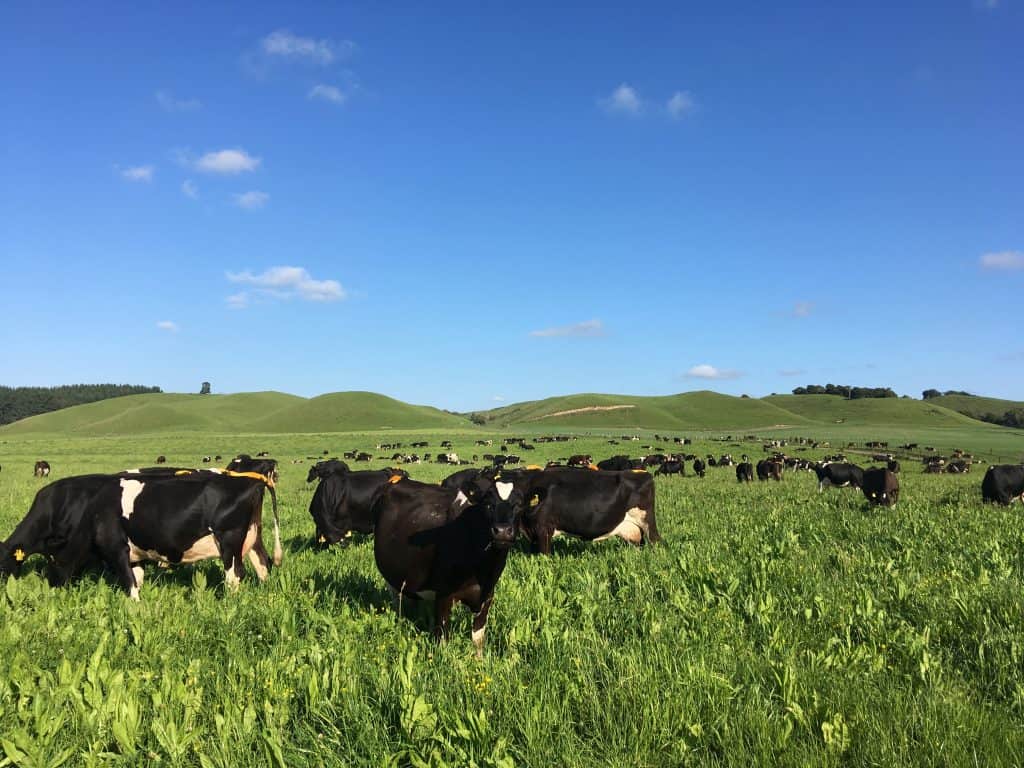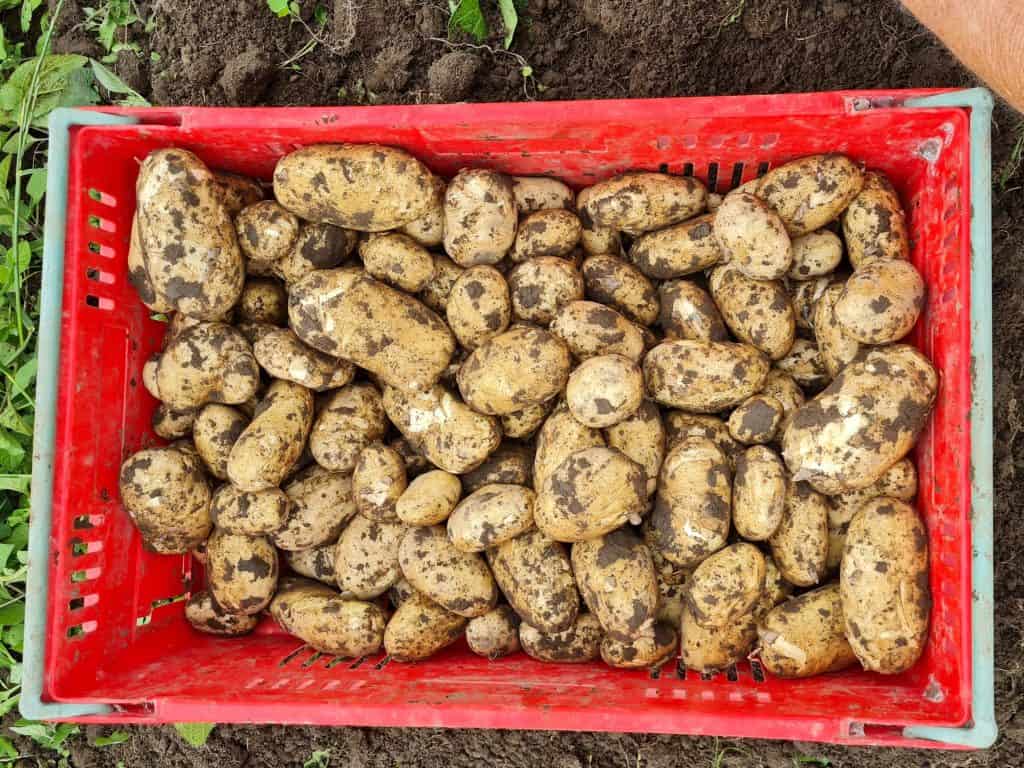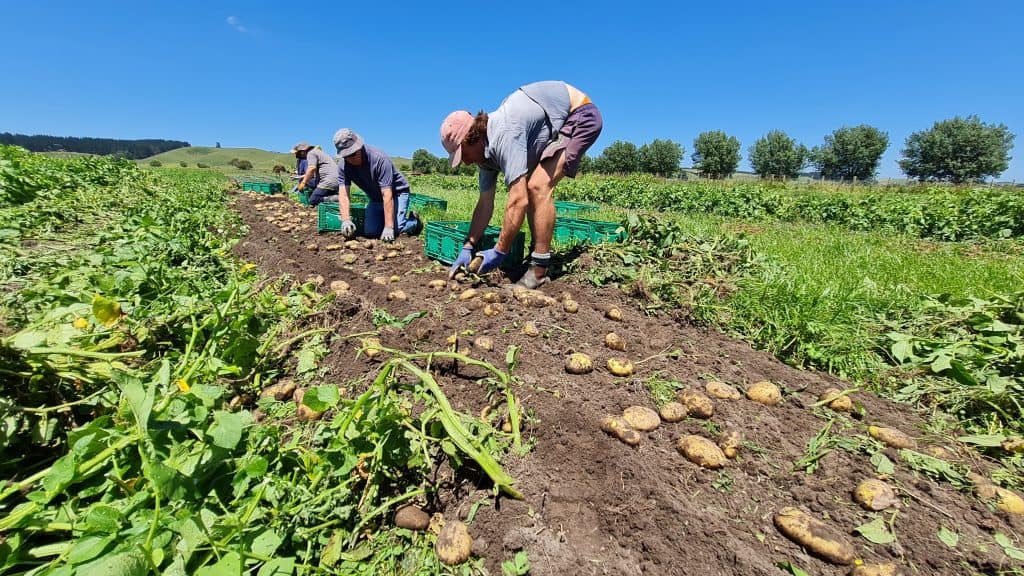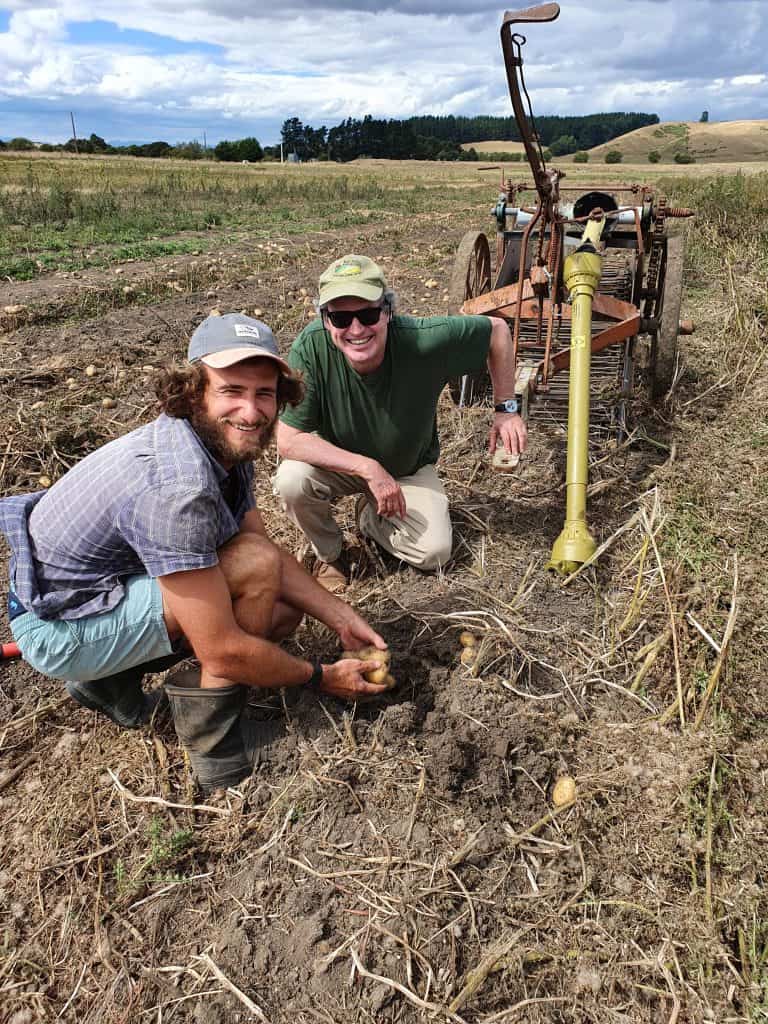by Gemma Carroll (Potatoes New Zealand)
Potatoes NZ made the most of their 2021 Field Walk in the Horowhenua District this March by including a visit to Mingiroa Farm, tucked away in the nearby Rangitikei District.
Mingiroa is a small farm on rolling hills, with pockets of native bush, the Rangitikei river nearby, a herd of 300 cows, some sheep, paddocks full of grasses and herbs, 4 hectares of vegetable crops including asparagus, squash, pumpkins, brassicas and potatoes as well as fruit trees like figs, feijoa, and apples. There is also a nursery for retail vegetable seedlings. Mingiroa has a total of 248 hectares of organic farmland, 90 hectares of which is leased.
Since 1852, the Hogg family have tended to the land, and grown food for their community.
Mingiroa Farm is organically certified by BioGro New Zealand and is utilising regenerative methods to build nutrients, life, and carbon in the soil. The organic dairy herd are moved 4-5 times a day through diverse pasture including cocksfoot, fescue, legumes, forbs, other cover crops and vegetable cropping areas. It is a good life for the cows with a healthy diverse diet.
The family fully converted to organics in the early 2000s. Initially they grew and marketed organic vegetable boxes and organic peas for processing. At the time it did not seem like the market was ready and it was a bit of an uphill battle. So, they withdrew and grazed heifers and dairy cows before converting to dairy in 2008.
Due to the high input, high financial and high environmental cost of conventional dairy farming, Mingiroa returned to farming organically 3 years ago and are now growing organic vegetables alongside the dairy cows.
Sam Hogg reckons spuds are great for dairying and offer a nitrate mitigating crop.
5-10% of the potato crop will be seconds but are not wasted as they then become food for the herd.
To date Sam has grown his 1.5 hectares of spuds with zero inputs and achieved around 35T/hectare in his Agria crop this season. By way of comparison, a nearby conventional grower with a similar climate may expect to achieve 50T/hectare but uses applied fertiliser to achieve this, pesticides, herbicides and more tillage or cultivation.
For Sam there is constant learning, especially in these early stages. He planted tubers shallow and only mounded three times using a Lilliston cultivator but thinks he would use a traditional mounder next season and the Lilliston for weed control only. There is also the possibility of trying different varieties such as Moonlight, which set tubers deeper and so can respond well to shallow planting, allowing for maintaining the regenerative method of minimal tillage.
Harvesting also uses minimal soil interference and there is no spraying off, as seen on conventional farms. The foliage dies off and then the crop is mowed. This might seem like a risk for pest and disease exposure but when we visited there were no signs of Tomato-Potato Psyllid (Bactericera cockerelli) and PNZ will be visiting again to take a closer look at what factors have influenced the absence of this common potato pest.
New Zealand potato growers struggle with psyllid and use sprays, netting, or in some regions biological controls (Tamarixia Triozae).
The unexpected/accidental management of this pest may be due to micro-climate, altitude offering good air movement, companion planting, an emphasis on building soil life, biological crop nutrition and diverse crops bringing beneficial insects. Psyllids are drawn to yellow, hence their arrival when potato crops start dying off (yellow foliage) but perhaps the nodding heads of sunflowers close-by are a more attractive option.
The current market for Mingiroa organic potatoes is high end, premium organic retail table potatoes, but there are opportunities to diversify their market to include organic crisping and organic seed potato.
The question for many in NZ is, what is Regenerative Agriculture?
According to the Mingiroa website Regenerative agriculture is a system of farming that aims to rebuild the soil and pasture health of farms by working with and supporting nature’s systems and processes.
This whole system approach to farming includes:
- long grazing rotations, that mimics the grazing of traditional herd animals.
- encouraging and planting diverse pastures with different species of herbs, legumes, and grasses, each with a unique role to play in soil and animal health.
- vegetable cropping rotations, that uses the fertility from grazing animals to grow nutrient dense food and rests the soil between harvests.
- minimal tillage, supporting the structure and water holding capacity of soil, carbon stores, biological life and preventing erosion.
- supporting life and preventing desertification (lifeless soil) by not using chemical sprays (pesticide and herbicides such as roundup) and synthetic fertilisers.
Mingiroa believe that because healthy soils sequester carbon, this farming method has the potential to change the way we grow food and restore the health of our soil and climate.
Benefits for the environment, human communities, and the planet, include:
- improving physical health of farmers by growing safe, healthy, and nutrient dense food without chemicals
- improving mental health of farmers by farming in a way that is part of the solution and not part of the problem.
- improving community health, by supporting thriving eco-systems, bird populations and clean waterways
- creating financial resilience and profitability by working with natural living systems and farming with freedom from expensive inputs
- improving animal health by offering nutrition in the paddock that supports the welfare of animals.
- environmental health by increasing the absorption of carbon dioxide by diverse plants, pastures and trees and reducing greenhouse gas emissions.
- environmental resilience by building the water holding capacity of the soil and having a diversity of plants that thrive in different seasons.
Regenerative Agriculture has caught the attention of governments and global environmental leaders.
On 22nd February 2021 Manaaki Whenua and Our Land Our Water released a Regenerative Agriculture White Paper setting out pressing research priorities for New Zealand Regenerative Agriculture.
The recent white paper mostly considers regenerative farming in the arable and livestock sectors, not much is known or been researched in the horticulture sector yet, however there is a global trend in the marketplace for sustainable farming methods and Potatoes NZ hope to explore how the vegetable sector might benefit from a regenerative project, especially as The Ministry for Primary Industries has funding available for this work.
Key points from the Our Land Our Water press release were:
• There is a pressing need for scientific testing of the limited evidence and anecdotal claims being made by regenerative agriculture practitioners and proponents.
• The new white paper sets out 17 priority research topics identified by 200+ representatives of New Zealand’s major agricultural sectors, regenerative agriculture farmers, and professionals in the wider agri-food system.
• The white paper introduces 11 principles for regenerative farming in New Zealand emerging from farmer focus groups, applicable to all sectors.
• There is significant overlap on the continuum of practices between mainstream and regenerative agriculture. The white paper examines areas of compatibility between mainstream and regenerative farming practices and strategies.
• Regenerative farmers appear likely to question the status quo and look for new opportunities and different ways of living, working, and improving their farming system.
Regenerative agriculture has been proposed as a solution for some of Aotearoa New Zealand’s most acute challenges. Advocates suggest it can improve the health of our waterways, reduce topsoil loss, offer resilience to drought, add value to our primary exports, and improve the pervasive well-being crisis among rural farming communities.
With a groundswell of farmers transitioning to regenerative agriculture in New Zealand, there is an urgent need for clarity about what regenerative agriculture is in New Zealand and for scientific testing of its claimed benefits.
The white paper refrains from offering a definition for two reasons: the risk of constraining an evolving concept, and the need for any New Zealand definition to be anchored in Te Ao Māori (the Māori world view). Collective work by Māori experts and practitioners is currently in progress to identify linkages between Te Ao Māori cultural concepts and regenerative agriculture principles.
Lead author Dr Gwen Grelet, senior researcher at Manaaki Whenua – Landcare Research, says that although evidence is urgently required, regenerative agriculture potentially has an important role to play in New Zealand.
“Regenerative agriculture has huge momentum internationally in all parts of the food system. It is not a magic bullet but its grass-roots popularity with farmers and food consumers mean it has huge potential for driving the transformation of Aotearoa’s agri-food system to move our country closer to its goals.
“Our consultation found many areas of strong agreement between advocates and sceptics. It’s time to stop bickering and focus on identifying any true benefits regenerative agriculture might have for New Zealand.”
The white paper is the result of intensive collaboration and consultation with more than 200 people from June to November 2020. Collaborators include farmers and growers, researchers, primary industry bodies, banks, retailers, non-governmental organisations, government departments, large corporates, consultants, marketers, overseas researchers, and educators.
The project was funded by the Our Land and Water National Science Challenge, the NEXT Foundation and Manaaki Whenua – Landcare Research.
You can find the paper on our PNZ Sustainability page https://potatoesnz.co.nz/growing-certifying/growing-potatoes/sustainability/




